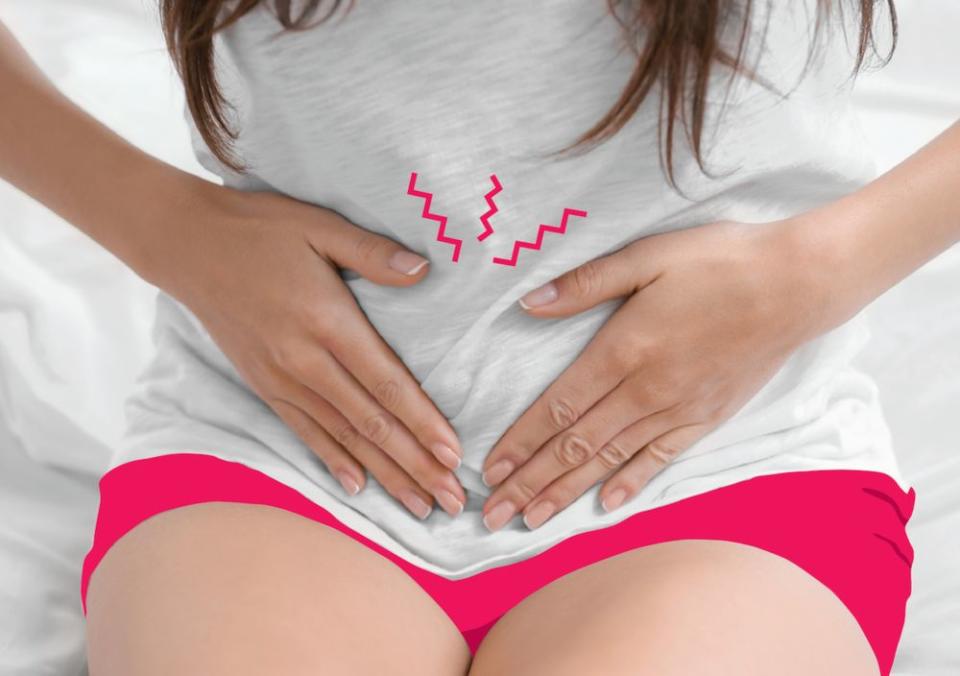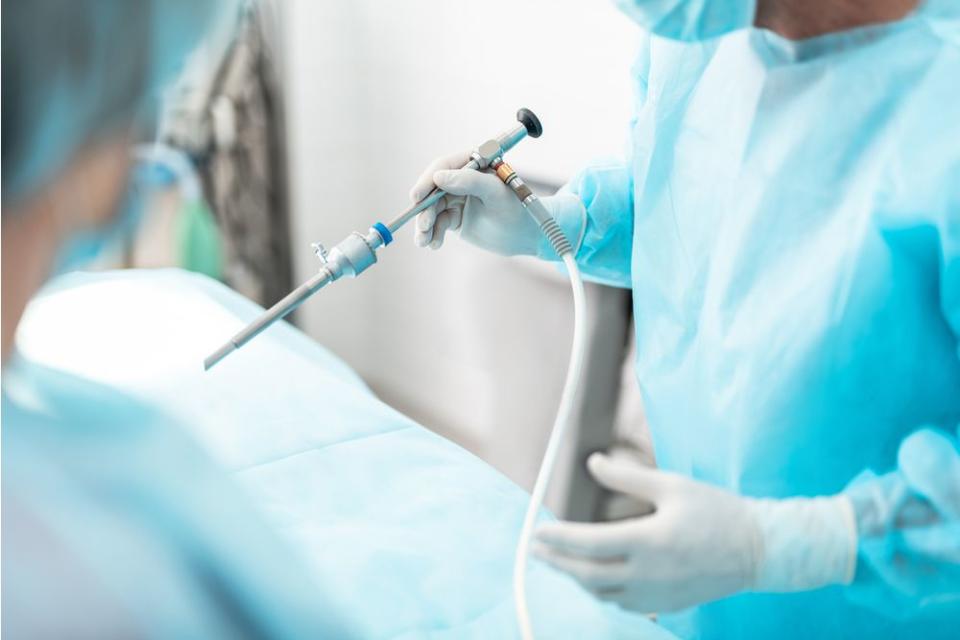Endometriosis: Symptoms, Causes, and Treatment Options

Endometriosis is a relatively common, albeit painful, health problem affecting the reproductive system. With endometriosis, the tissues of the uterine lining (called endometrium) start growing somewhere outside of the uterus – often in the ovaries, fallopian tubes, and pelvic tissues. More rarely, they can grow in other areas like the vagina, rectum, cervix, and bladder.
Around 10% of reproductive-aged women experience endometriosis, says Karli Goldstein, M.D., a gynecologic surgeon at Seckin Endometriosis Center – although she claims that’s probably an underestimate. Symptoms include pelvic pain, uncomfortable menstrual periods, and potential infertility. And while there's no cure for endometriosis, women can reduce the side effects with medications or surgery.
Here’s everything you need to know about endometriosis causes, prevention, symptoms, and treatment options.
Endometriosis Causes
Nobody knows exactly what causes endometriosis, says Masahide Kanayama, M.D., an endometriosis specialist at The New York Endometriosis Center. He adds that it’s likely multifactorial. Even so, doctors have developed a few possible explanations.
Retrograde Menstrual Flow: During a normal period, the uterine lining and tissue (menstrual blood) shed out the vagina. But with retrograde menstruation, this blood flows “backwards” through the fallopian tube to the pelvic cavity. Endometrial cells in the blood may adhere to the pelvic walls, according to Mayo Clinic. It’s important to note that while most women experience some degree of retrograde menstruation, not everyone will develop endometriosis. More studies must be done to determine the correlation.
Hormonal Factors: Researchers have found a link between estrogen and endometriosis, according to the Office on Women’s Health. The hormone could possibly transform normal cells into endometrial cells.
Immune System Factors: In those with weakened immune systems, the body may not properly destroy misplaced endometrial tissue.
Cell Transfer: Endometrial cells could be carried throughout the body by blood vessels or the lymphatic system, according to UCLA Obstetrics and Gynecology.
Endometriosis Risk Factors
Although doctors aren’t entirely sure what causes endometriosis, they have identified a few risk factors. They include:
A family history of endometriosis. Dr. Kanayama says the chance of developing endometriosis is seven times higher if a family member was diagnosed.
Not having children
Short menstrual cycles (less than 27 days)
Periods lasting longer than seven days
Starting menstruation before age 12
Abnormal flow of menstrual blood from the body
High estrogen levels
Disorders of the immune system
Signs and Symptoms of Endometriosis
According to Dr. Kanayama, the most prominent endometriosis symptom is pelvic pain around the time of menstruation. This pain is more severe than typical menstrual cramps, and it may extend to the abdomen or back. Sometimes endometriosis pain worsens over time.
Other symptoms of endometriosis include:
Painful intercourse
Heavy periods with clots
Painful bowel movements or urination, usually during the menstrual period
Digestive issues such as diarrhea, constipation, or nausea. These symptoms are sometimes mistaken for irritable bowel syndrome (IBS).
Bloating
Chronic fatigue
Dr. Kanayama adds that some women don’t have any symptoms of endometriosis. However, this could be dangerous, since they may not get properly diagnosed and treated.
Endometriosis and Infertility
One of the biggest complications of endometriosis is infertility, or the inability to conceive despite having regular unprotected sex. UCLA Obstetrics and Gynecology says infertility affects between 20% and 40% of endometriosis sufferers. In fact, infertility may sometimes be the only sign that a woman has endometriosis. Reproductive assistance technologies like in vitro fertilization (IVF) and intrauterine insemination (IUI), as well as surgical treatment of endometriosis, can help endometriosis-induced infertility.
If you do conceive with endometriosis, Dr. Kanayama says you’ll likely have a normal, healthy pregnancy – although there’s an increased risk for miscarriage.

Diagnosing Endometriosis
Visit your doctor if you show any symptoms of endometriosis. She may first conduct a pelvic exam, ultrasound, or magnetic resonance imaging (MRI). While these can’t diagnose endometriosis, they alert your doctor to cysts or other abnormalities in the reproductive tract.
If endometriosis is suspected, the Ob-Gyn will likely conduct a laparoscopy, according to Dr. Kanayama. During this procedure, the surgeon will make a small cut near your navel, and then analyze the interior of the abdomen with a small camera. A laparoscopy will detect the location and severity of the endometriosis. Dr. Goldstein says the doctor may take a biopsy (sample) of the endometrial tissue to examine under a microscope.
Unfortunately, the road to an endometriosis diagnosis may be difficult. In fact, the average sufferer gets diagnosed 10 years after symptoms appear, according to the Endometriosis Foundation of America. Lack of knowledge is the main culprit, as well as misdiagnosis of the condition.
Endometriosis Treatment
Unfortunately, there's no cure for endometriosis. But you can treat the condition and manage pain with the following methods.
Medication
For mild cases of endometriosis, over-the-counter medications can manage pelvic pain and cramping. What’s more, Dr. Goldstein says birth control pills may diminish endometriosis symptoms. The contraceptives cause the misplaced endometrial tissue, which break down during the monthly cycle, to grow less quickly. Hormone therapy – like gonadotropin releasing hormone agonists that replicate menopause – may also be effective. Keep in mind, however, that medicine temporarily masks the problem instead of eliminating it.
Surgery
For more severe endometriosis, or for treating endometriosis when trying to conceive, you may undergo surgery. A laparoscopic excision surgery lets you keeps your uterus and ovaries, according to Mayo Clinic. The surgeon will remove the endometrial tissue through a small incision in your abdomen, using a camera for guidance. Hormone treatment may still be recommended after surgery, and endometriosis may return over time.
Severe endometriosis may require laparotomy, or open abdominal surgery. Some women who don’t wish to become pregnant may get a hysterectomy, which removes the uterus. They may also elect to remove the ovaries with oophorectomy, although this procedure causes menopause, according to Mayo Clinic.
Lifestyle Changes
Dr. Goldstein says some women find relief from lifestyle changes, including an improved diet and exercise plan. Alternative treatments, such as acupuncture and herbal supplements, may also help.

